Bryton said it wanted to push the boundaries with the Rider S800 bike computer at its launch. It’s up there with the best for screen size in a mid-sized unit and for battery life.
The Rider S800 provides the basic functionality well too, but some of the more advanced functions are awkward to use.
Bryton Rider bike computers have been bubbling under for a while now. A few years back, when Garmin first started to dominate the bike computer market, Bryton head units were relatively clunky things.
The brand has upped its game recently though, with the current flagship Bryton Rider S800 intended to pack in premium features and target the top end of the cycling computer market.
The Rider S800 is Bryton’s best crack at a premium computer yet, despite falling down in a few areas.
Bryton Rider S800 specifications

The Bryton Rider S800 sits in the mid-range of cycle computer dimensions, a bit larger than the Garmin Edge 830 and Wahoo Elemnt Roam, but not as big as the Garmin Edge 1040.
Despite its dimensions (105x58x14.2mm), it doesn’t feel that large on the bike or in the hand. That’s due to the S800’s steeply sloping sides and relatively shallow format, rather than the usual slab-sided cycle computer designs. It’s also fairly lightweight at 104g.
Bryton claims IPX7 waterproofing and the S800 is charged via USB-C, so a recharge is theoretically faster than with a standard USB cable; I got a 50 per cent boost in an hour and 75 per cent in under two.
As well as the touchscreen interface, you can control the Rider S800 via the four physical buttons on the sides of the case, which enable you to switch the device on and off, start and stop a ride, drop a lap marker and scroll between pages of data.
Bryton has managed to pack a large colour touchscreen into the computer’s top surface. At 3.4in diagonal, it’s almost as large as the Garmin Edge 1040’s 3.5in and significantly larger than the 2.6in of an Edge 830, the Rider S800’s closest Garmin competitor price-wise.
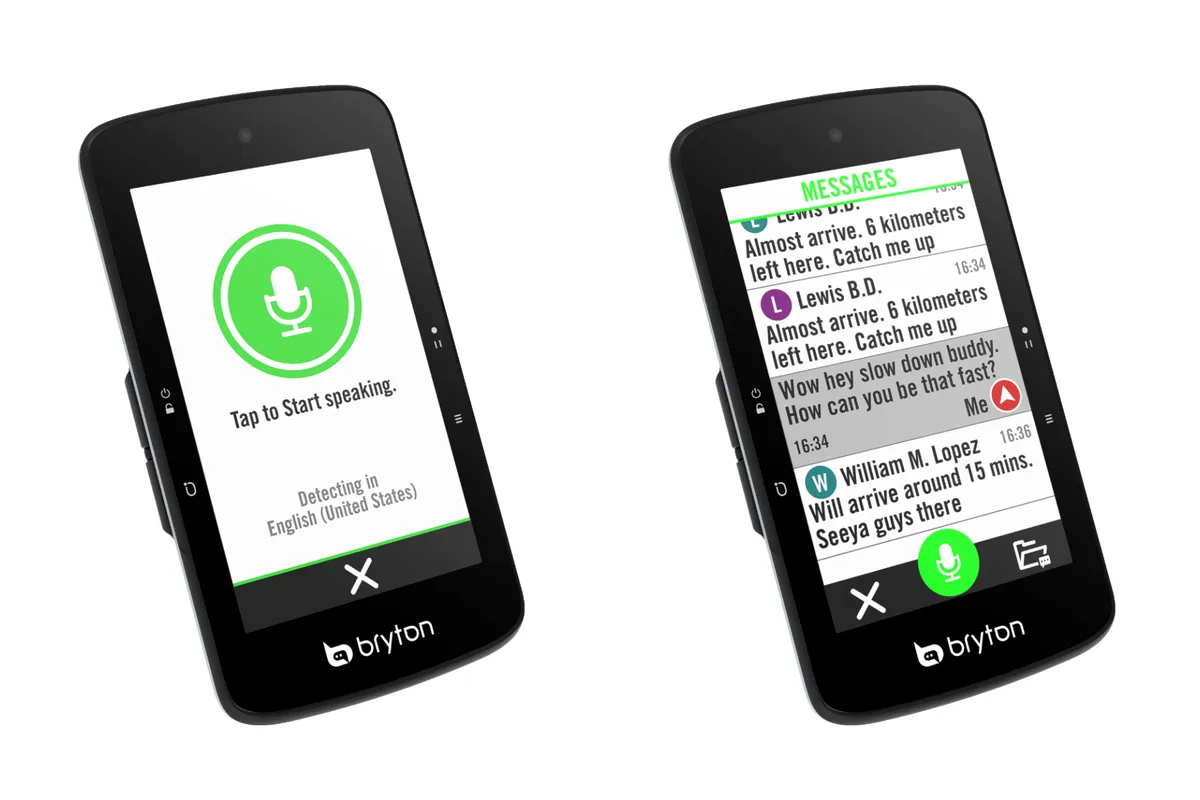
Its resolution of 240x320 pixels compares favourably to most rivals, although it’s significantly less than the Hammerhead Karoo 2.
Bryton has looked to ensure readability with a reflective layer installed behind the screen to help prevent screen shadow and an ambient light sensor to control brightness.
It uses a technology called Memory In Pixel (MIP), where only the pixels that need to be refreshed as the data changes are addressed by the processor, helping to extend battery life.
The S800 comes packaged with a standard rubber band bar/stem mount, as well as a rubber protective case and a lanyard. You can also buy a robust metal out-front mount as an extra.
The mounts use Bryton’s own quarter-turn system that’s not compatible with Garmin-style mounts, but you can unscrew it from the bottom of the computer and replace it with an optional Garmin mount.
As well as the standard package, Bryton also sells a bundle of the Rider S800 with a heart rate monitor, plus speed and cadence sensors. This adds around £80/$80 to the retail price.
Bryton Rider S800 setup
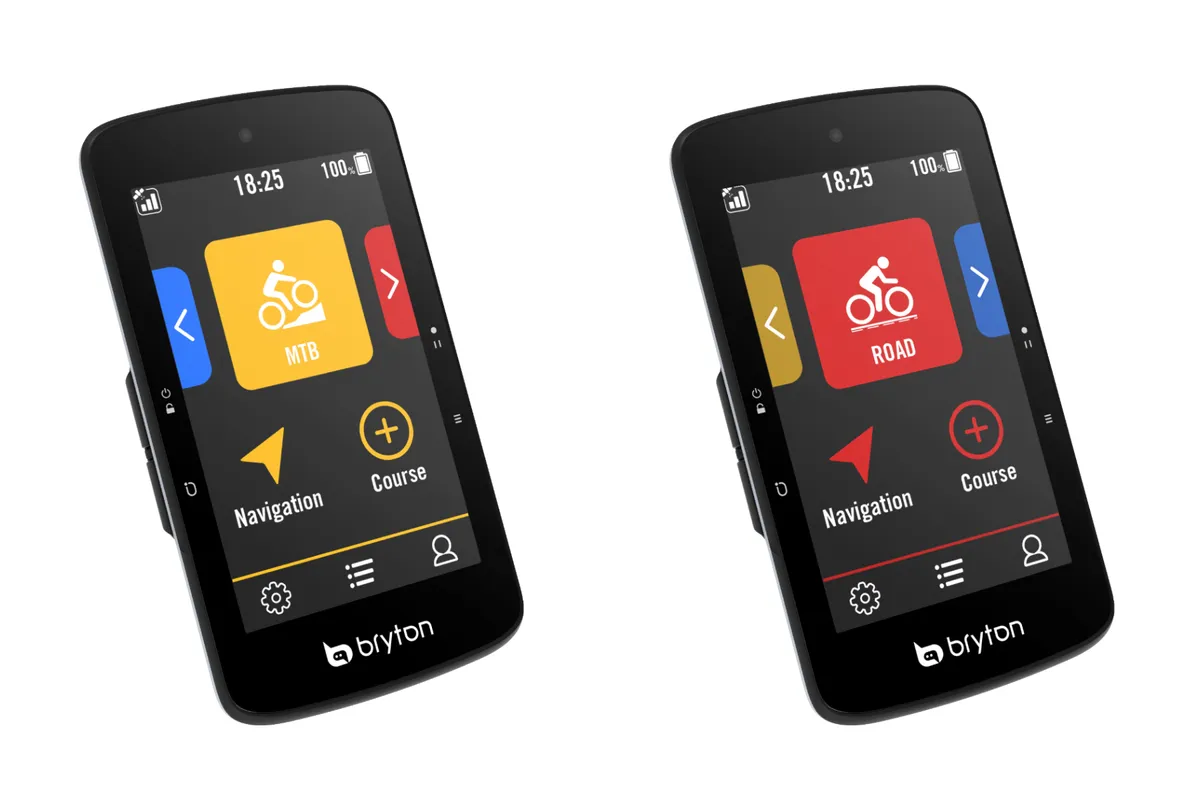
Setup for the Bryton Rider S800 follows the now-standard process for cycle computers that was pioneered by Wahoo.
Switch it on and after a few preliminaries you’re prompted to download the Bryton Active app to your smartphone and a 3D barcode appears, enabling you to pair the two. After that, setup continues on the phone, although you can also revert to the device.
You can connect to one of the best power meters, speed and cadence sensors and a heart rate monitor over ANT , while for HRMs there’s also Bluetooth connectivity. With the majority of newer devices supporting both ANT and Bluetooth, this may not be an issue, but it’s something to bear in mind.
There’s connectivity to rear-view radars and electronic shifting systems too.
Bluetooth is also used to hook up to the smartphone, which is used for data uploads and firmware updates.There’s no WiFi support on the Rider S800.
You can set up to three different bike profiles, either on the S800 or in the app. The device comes with Road, Indoor and MTB as defaults.
For each profile, you can set up how many data pages you want to see and what data you want on each, with a max of eight pages and 10 data fields per page.
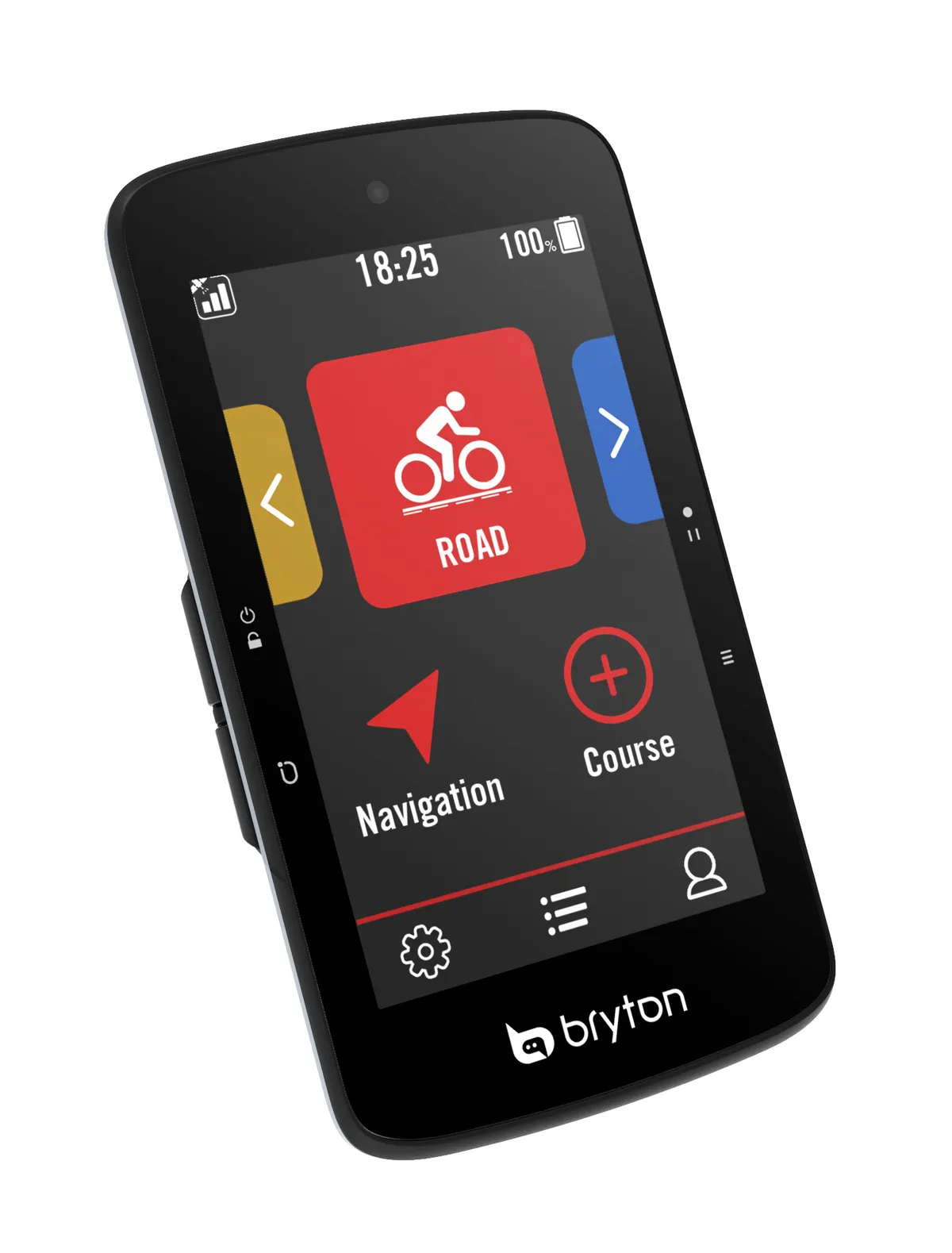
The Indoor profile enables you to hook up the Rider S800 via ANT to a smart trainer and control its resistance.
You can replay outdoor rides and use the Bryton Active app to build your own workouts and follow these, as well as TrainingPeaks routines.
The status screen is a nice feature. You can bring it up by tapping on the touchscreen as you ride, giving you summary data for your ride to date. You can configure this as you like, giving you key stats without needing to scroll through pages.
Bryton also enables you to set up group rides, invite friends and track each other’s locations. You can also send texts using voice-to-text, although this assumes your ride group are all on Rider S800 computers.
As with many other bike computers, there’s support for live tracking by designated contacts.
I found that some of the phone app screens took a long time to sync with the S800, so setup and route syncing could be a little slicker.
The device has an irritating tendency to power down without warning when you’re not recording a ride, so you need to keep alert during syncing when nothing seems to be happening.
Bryton Rider S800 ride data
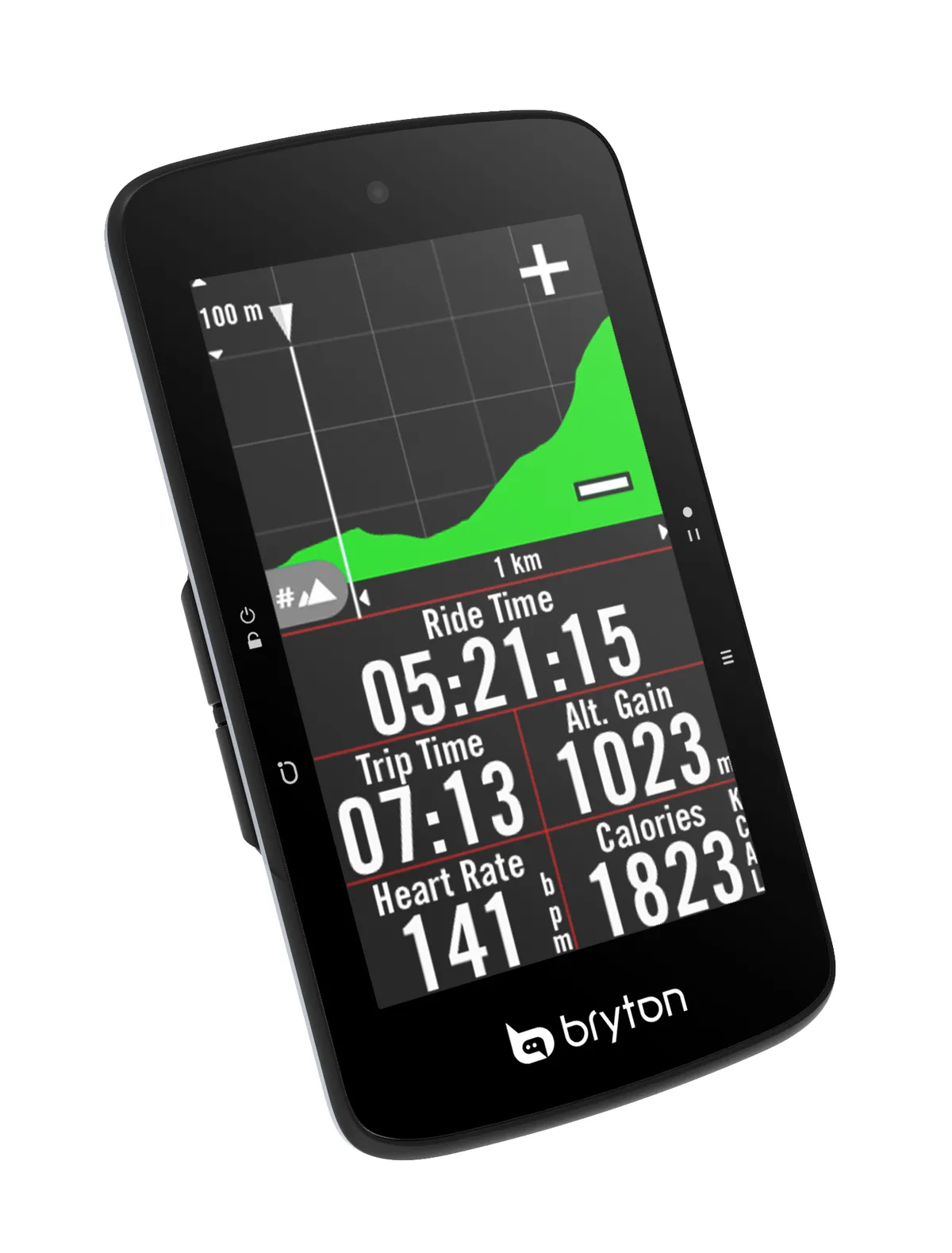
The easy-to-read screen means you can keep track of everything you want as you ride. It’s fast-reacting, so you can quickly swipe through multiple screens of data, while the status screen is a useful summary of your most important ride data all in one place.
If you’re following a pre-planned route, the Rider S800 will bring up its Climb Challenge display when you get to the bottom of a hill.
As with similar functionality in other brands’ bike computers, this gives you a colour-coded climb profile along with distance and elevation to go, the current gradient and your speed.
Incidentally, on a second lap round the same route, you’ll get a gradient profile and turn info, but the Climb Challenge display doesn’t present itself again.
At the end of the ride, you need to use the top right-hand button to stop recording, then you’re prompted to save or discard the ride data.
I found the buttons a bit awkward to use even with bare hands, because they’re quite small and not very prominent on the sides of the case. Wearing heavy winter gloves, they were still usable, but not easily.
After a ride, your data will sync automatically via the phone app to your Bryton Active account and onwards to Strava and other cycling apps.
There’s a reasonable level of analysis available in the Bryton apps, although you’ll get a lot more from the likes of Strava.
Bryton Rider S800 mapping and navigation
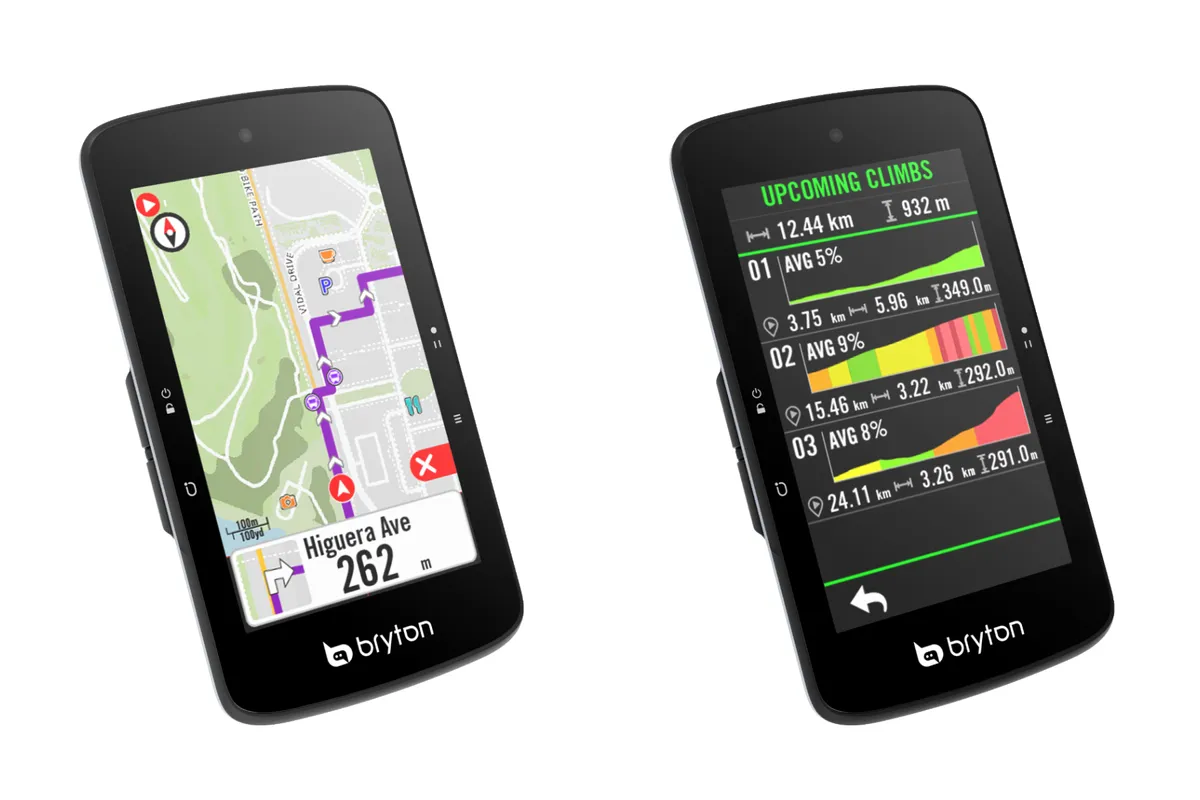
Mapping and navigation on the Bryton Rider S800 is a mixed bag.
The OpenStreetMap basemap on the device is pretty clear and easy to read. You get road names even for minor roads and points of interest such as cafés. Zooming in and out is easy by tapping the screen.
If you’re following a route, it’s marked out with chevrons on the road to follow, and you get notifications and an audible alert well in advance of turns.
The device will cope with minor deviations, alerting you that you’re off-route and rerouting you.
More major deviations tend to flummox it though, and it only starts to give you directions again when you’re close to your original route. If all else fails, you can always ask the Rider S800 to navigate you back to your start point.
You can map out a route on the Bryton Active phone app. This is doable, but a slightly awkward process unless you have a huge screen on your phone.
It’s easier to work on a computer on the web app, when the trace usually follows a pretty logical route between dropped waypoints.

If it does decide to deviate, you have to delete the waypoint and try again, which is slightly less elegant than being able to drag it to where you want to go.
You also have the option to speak to the computer and give it the name of the place you want to ride to. The voice recognition is driven by Google on the phone and is surprisingly effective, correctly interpreting reasonably quickly all the place names that I tried.
Getting a route that you’d want to ride is a different matter, because you're usually taken by the most direct route, which can include busy roads.
The same is true of the Explore function. Here, you set the distance you want to go and the Rider S800 will come up with three route options to follow, but again they often include some very busy roads.
Without heatmap data of where cyclists ride, Bryton isn’t able to recommend more bike-friendly options. You’ll get better suggestions of how to get from A to B by using Strava’s route planner (for which you need to have a paid subscription) or Ride with GPS, which take advantage of rider data.
You can sync routes from both, along with Komoot, to the Bryton Active app.
You can also import .gpx route files, making Garmin Connect another option with heatmaps, which you can use for route creation.
Bryton Rider S800 battery life
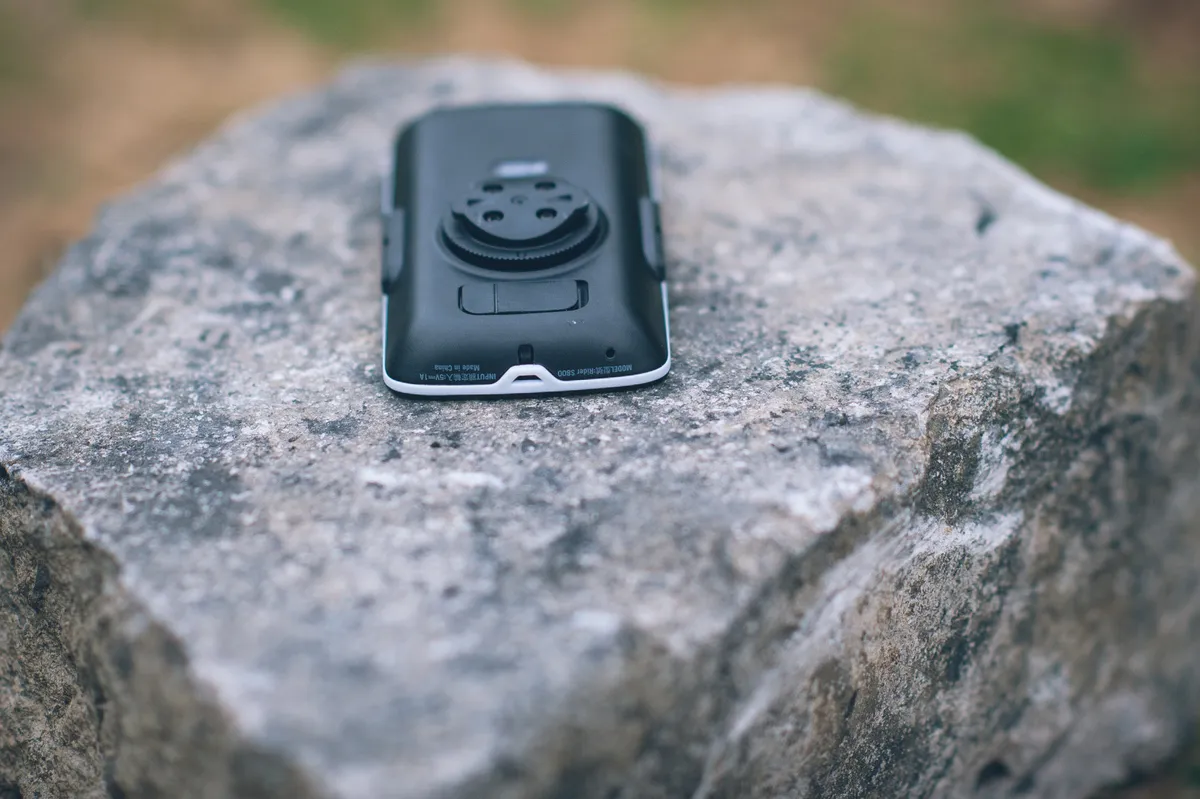
Bryton claims a 36-hour battery life for the Rider S800. Based on testing, this is realistic, and is near the top end of cycling computer battery life. Over a series of rides and plenty of time spent fiddling with the computer, battery life was still nowhere near exhausted.
As usual, if you start to switch things off and don’t interact much with the computer, you should be able to eke out more battery run time. Connectivity is likely to be the largest drain on power, so disconnecting peripherals should give you more life if you need it for longer adventures.
A lot of the Rider S800’s functionality is dependent on having the Bryton Active phone app running, but this seems to be particularly resource-heavy and drained my Android phone at a rapid rate, even running in the background when I was not riding.
Bryton Rider S800 bottom line
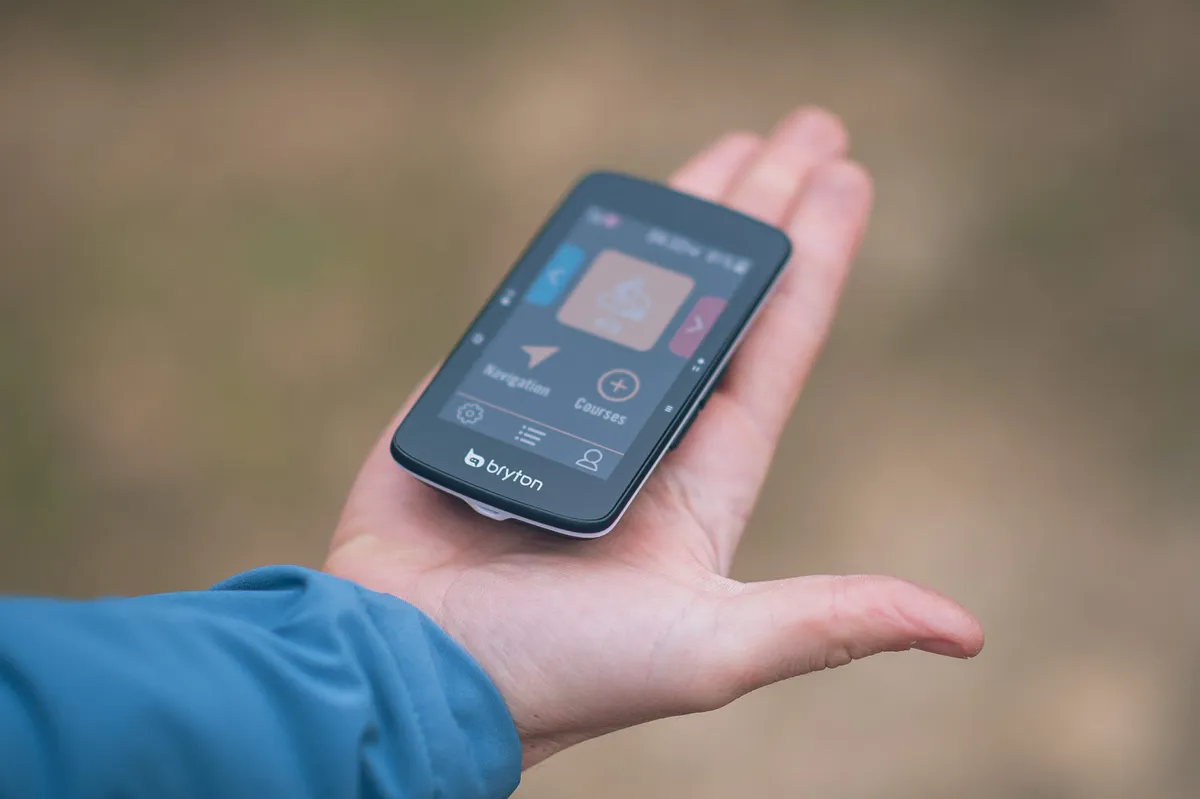
The Bryton Rider S800 is an attractive cycling computer with good battery life and a large high-contrast screen for its mid-sized format.
The screen is a plus over competing devices such as the Garmin Edge 830 and the Wahoo Elemnt Roam, although it’s bested by the Hammerhead Karoo 2.
The Rider S800 offers lots of functionality and does the basics well, but is slightly fiddly to use for more advanced functions.
If you just want to set up, get out and record your rides, the Rider S800 is a good option, but if you’re into fine-tuning your computer and using the bonus capabilities you might find it frustrating.
Product
| Brand | bryton |
| Price | 650.00 AUD,400.00 EUR,340.00 GBP,400.00 USD |
| Weight | 104.0000, GRAM () - unit weight |
Features
| br_rechargeableBattery | yes |
| br_screenType | touchscreen |
| br_connectivity | antPlus |
| br_connectivity | bluetooth |
| Features | Memory: 16GB Constellations: GPS, GLONASS, QZSS, BEIDOU, Galileo Charging: USB C Charge time: 50% charge in one hour, 75% in under 2 hours |
| br_dimensions | 105mm tall x 58mm wide x 14.2mm deep |
| br_batteryLife | 36 hours claimed |
| br_waterResistance | IPX7 |
| br_screenDimensions | 3.4” |
| br_displayResolution | 272 x 451 pixels |
